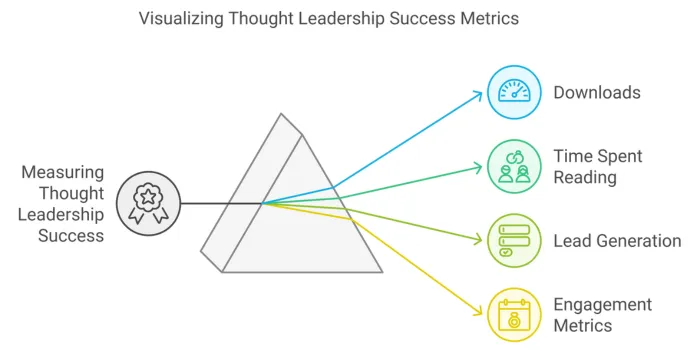

Every day, 7.5 million blog posts hit the web. White papers? Fewer—but that's precisely what makes them stand out.
In a world drowning in surface-level advice, businesses that offer real insight rise above the noise. They don’t just join the conversation; they lead it. That’s the magic of a white paper—a well-crafted document that does more than inform. It transforms.
White papers are not your run-of-the-mill content. They’re research-backed, insight-packed, and solution-driven. Think of them as the Michelin Guide of content marketing: not everyone gets it, but the ones who do are recognized as the experts.
Let’s clear this up first. A white paper isn’t just a long blog post dressed up in jargon. It’s a strategic piece of content designed to address a specific audience’s problem or opportunity with depth, clarity, and authority.
Unlike blogs or eBooks, white papers aren’t about casual reads. They’re about business transformation, delivering insights that decision-makers need to act on.
Why are some brands trusted like old friends while others struggle to gain even a second glance? The difference often lies in their ability to present their expertise in a way that matters.
White papers show—not tell—why your business deserves a seat at the table. They combine robust data, actionable strategies, and industry trends, making them the ideal tool for thought leadership.
Start by defining the purpose—know exactly why you’re creating this white paper. Is it to educate your audience on a complex topic? Build trust with potential clients? Or perhaps position your business as a thought leader? Clarity at this stage sets the tone for the entire project.
Then, here are a few simple steps you can follow to ensure your white paper achieves its goals:
Before you write a single word, ask yourself: What do I want this white paper to accomplish?

White papers aren’t created to tick a content-marketing checkbox. They serve a higher purpose:
For instance, if your goal is to convert leads, your white paper should answer pressing customer questions. However, if your aim is to position your brand as a thought leader, it must focus on high-level insights rather than product features.
The best topics come from understanding what your audience truly cares about.
A topic like "The Future of Cybersecurity in SMEs" is far more compelling than a generic "Cybersecurity for Businesses." It’s specific, forward-looking, and solves a real-world problem.
The first few paragraphs of your white paper should grab attention, like the opening lines of a bestseller.
Example: "By 2030, artificial intelligence will have transformed 90% of global industries—but are small businesses prepared for this shift?"
Facts and figures are essential, but it’s the story that keeps your audience reading.
An effective white paper is more than a block of text; it’s a roadmap. Here’s a structure to guide your writing:
Creating a white paper is more than just putting words on a page; it’s a deliberate process that combines research, strategy, and creativity. Each step, from ideation to distribution, requires precision and a clear understanding of your audience’s needs.

Good research is the difference between a skimmed white paper and one that’s shared across LinkedIn. Sources should include:
The key is to gather Data Like a Journalist. Include 1–2 surprising statistics to hook readers. For example: "72% of B2B decision-makers prefer content that uses data to support key points."
Avoid heavy jargon unless your audience demands it. Aim for clarity. Use analogies to explain complex topics.
Example: Instead of saying, “Blockchain enhances trust through decentralized nodes,” say, “Think of blockchain as a digital notary, verifying every transaction with total transparency.”
Your reader might not read every word. Use:
A well-designed white paper is more persuasive. Use:
The design reflects credibility. Ensure consistent fonts, spacing, and color schemes. Tools like Canva or Adobe InDesign can elevate your document.
Your audience won’t magically find your white paper. Use these channels:
Repurpose parts of your white paper for other content formats—blogs, videos, or webinars—to maximize ROI. At LexiConn, our content marketing experts can guide you through every step of the white paper creation and distribution process.
White papers are investments, and like any investment, their ROI needs to be measured. Success isn’t just about downloads—it’s about impact. Here’s how to evaluate and enhance the performance of your white paper.

Thought leadership success can’t be vague. Set clear, actionable KPIs such as:

Don’t let your white paper gather dust post-launch. Proactively engage with your audience:
A single white paper can fuel multiple content streams:
Align white paper content with ongoing industry trends to keep it relevant and evergreen.
Even a well-researched white paper can miss the mark if it’s poorly executed. Avoid these common pitfalls:
White papers are about thought leadership, not a glorified sales pitch. Your audience should feel educated and informed, not sold to. Stick to actionable insights and solutions, leaving the hard sell for another day.
Readers can spot thin content from a mile away. Lack of credible sources or overreliance on generic information undermines trust. Deep research not only enhances credibility but also sets your white paper apart from competitors.
Even the best-written white paper won’t succeed if no one reads it. Build a robust distribution strategy:
White papers are not just content—they’re credibility builders, conversation starters, and trust generators. In a world saturated with noise, they allow businesses to stand out by offering depth and actionable insights.
By investing in white papers, you position yourself as a leader who understands industry challenges and offers real solutions. It’s not just about being heard; it’s about being remembered.
Take the First Step Today
Don’t let your ideas remain untapped. Schedule your free consultation today with LexiConn | Content marketing agency in Mumbai and discover how we can turn your insights into industry-defining white papers!
Visit us at www.lexiconn.in or drop us a line at [email protected].



I have read and accept the Privacy Policy
Read More